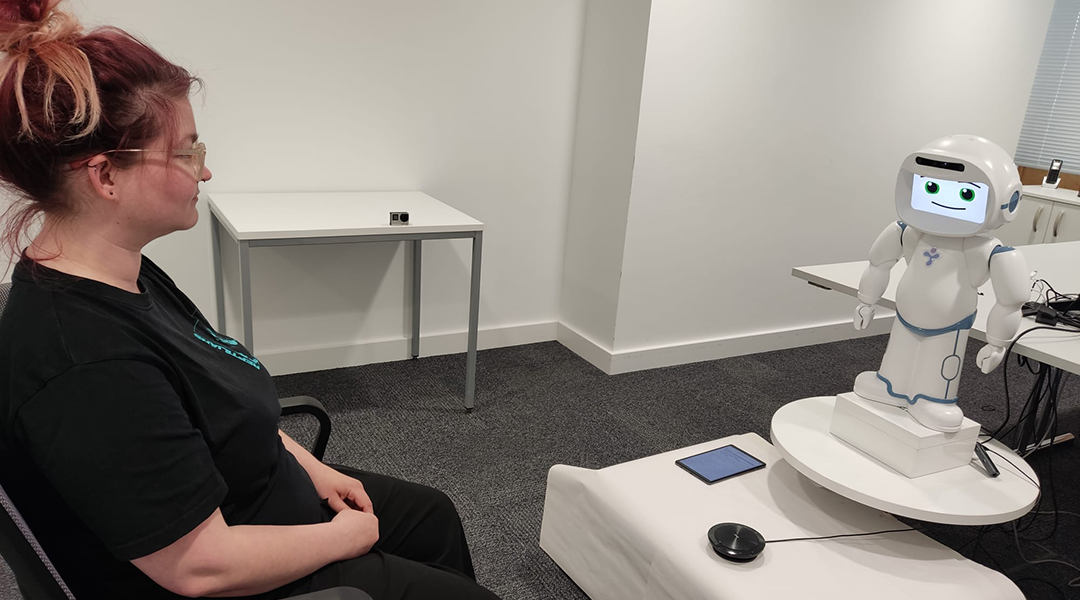As robots encroach into the workplace, headlines predicting a frightening future where robots replace humans and take our jobs continue to pop up. For many robotics researchers though, the goal is the opposite.
Instead of replacement, they aim to design systems to help humans rather than put them out of work. Unfortunately for them, we humans are reluctant to engage with robotic aides.
Beyond physical labor or household chores, robots can also assist people with cognitive and emotional tasks. Leading therapy groups for seniors to help slow cognitive decline or as a group from the University of Cambridge presented at ACM/IEEE International Conference on Human-Robot Interaction in March in Stockholm, Sweden, robots may one day improve workplace well-being — that is if we can learn to connect with them.
The right look for a robot
The co-author of the study, Minja Axelsson, and Professor Hatice Gunes who led the work at Cambridge’s Department of Computer Science and Technology spoke about their findings in a press release.
“Our perceptions of how robots should look or behave might be holding back the uptake of robotics in areas where they can be useful,” said Axelsson. Just like successful therapist or coach relationships between humans, machine-human relationships require engagement and trust.
To learn more about how the appearance of robots impacts these interactions, the team from Cambridge designed an experiment using two nearly identical robots.
QT and Misty are both robots with digital screens as faces and whose speech and expressions can be scripted. Researchers programmed both robots to lead weekly well-being sessions for 26 employees at a local tech consultancy firm for four weeks.
Each robot had the exact same speech and facial expressions and differed only in their physical appearance. QT is a childlike, humanoid robot while Misty is shorter and toy-like with features like tracked wheels instead of feet.
Human-robot psychology
Participants were guided by either QT or Misty to perform positive psychology exercises in one of the firms’ meeting rooms. After the sessions, the employees reported back on their experience to the researchers through a questionnaire and interview.
It turned out that employees working with Misty — the toy-like robot — reported a better connection with their robot coach compared to those who worked with the childlike QT. Participants also reported an overall more positive perception of Misty.
“The most common response we had from participants was that their expectations of the robot didn’t match with reality,” said Gunes.
The team believes that participants likely held lower expectations of Misty due to its simpler appearance and therefore found it easier to talk to. The opposite may be true for the other group, where a more human-like robot increased expectations that were not met by the scripted format of the exercises.
Marcos Maroto-Gómez, a post-doctoral researcher at University Carlos III of Madrid also studies human robot interactions and agrees that user expectation can color an experience. “Nowadays, humanoid robots do not have the appearance and capabilities of a human, so when people interact with a humanoid robot, they expect more from these machines,” he explained.
“However, when using a toy robot, they usually reduce their expectations and see the robot more like an entertainment agent, forgetting their expectations and focusing more on the interaction.” He added that fear or mistrust of robots may also play a role, “some people believe that robots can damage or make them lose their work, while a less capable toy robot does not lead to this feeling”.
Multi-faceted robot responses
Participants in the study said they still found the exercises useful but desired more genuine interactions.
“We programmed the robots with a script, but participants were hoping there would be more interactivity,” said Gunes. The Cambridge team is working on this feature but as Gunes explained, this is no small feat: “It’s incredibly difficult to create a robot that’s capable of natural conversation. New developments in large language models could really be beneficial in this respect.”
“From my point of view, the most important research line of human-robot interaction is multi-modality,” said Maroto-Gómez.
Endowing robots with the ability to perform multiple tasks simultaneously and reactively, such as responding to conversation or changes in the environment through language, movement and expression, will in his mind greatly improve the human-robot partnership.
Reference: Micol Spitale, et al. Robotic Mental Well-being Coaches for the Workplace: An In-the-Wild Study on Form. Presented at session 2.B, ACM/IEEE International Conference on Human-Robot Interaction in Stockholm, Sweden March 13-16, 2023
Feature image credit: University of Cambridge

















